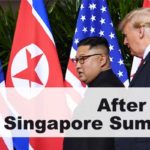Testing nuclear devices opens up a Pandora’s box of requirements that can be relieved only by accepting a modus vivendi with an adversary or by accepting minimal deterrence from the competition.
After testing nuclear devices in 1998, Indian and Pakistani leaders genuinely believed—or stated for the record, while suspecting otherwise—that bringing bombs out of the basement would help make the region safer and more stable. They assumed, as did leading strategic analysts in both countries, that nuclear-weapon requirements could remain modest and minimal. Subsequent developments made it is all too clear that, in South Asia, as elsewhere, the overlay of nuclear weapons onto existing grievances does not improve bilateral relations and reinforce conditions of stable deterrence. Pro-bomb constituencies grow stronger once the testing threshold is crossed. Testing nuclear devices opens up a Pandora’s box of requirements that can be relieved only by accepting a modus vivendi with an adversary or by accepting minimal deterrence and dropping out of the competition.
After the tests, Indian prime minister A. B. Vajpayee declared that, “Ours will never be weapons of aggression.” Pakistani prime minister Nawaz Sharif characterized the decision to test an act of national defense, reaffirming that “Pakistan will continue to support the goals of nuclear disarmament and non-proliferation, especially in the Conference on Disarmament.” The conference’s agenda has subsequently been moribund for multiple reasons, including that Pakistan has blocked negotiations on a fissile material cut-off treaty.
Jaswant Singh, India’s foreign minister, wrote in Foreign Affairs that “India shall not engage in an arms race, nor, of course, shall it subscribe to or reinvent the sterile doctrines of the Cold War.” One of these “sterile” doctrines is presumably the pursuit of nuclear war-fighting capabilities by means of counterforce targeting. It is unclear whether New Delhi can resist this temptation. A subsequent issue of Foreign Affairs carried a piece by Pakistan’s Foreign Secretary Shamshad Ahmad asserting that, “By establishing mutual deterrence, [Pakistan and India] have served the interests of peace and stability in South Asia.” Caveats followed about the need for India to meet Pakistan’s security concerns at least half way.
To reduce nuclear dangers and to head off an arms race, Vajpayee boldly ventured to Lahore in February 1999 for a chaotic summit with Nawaz. At Lahore they pledged to seek the resolution of the Kashmir dispute, refrain from intervening in each other’s internal affairs, engage in a composite dialogue on outstanding issues, negotiate confidence-building agreements and other steps to prevent conflict. Nawaz reiteratedhis “earnest desire to avoid an arms race” at the summit.
Indian heavyweights such as K. Subrahmanyam, Jasjit Singh and K. Sundarji weighed in with assessments that very few nuclear weapons would be needed for stable deterrence. Sundarji, an adventurous former Army chief and unapologetic booster of an Indian bomb, quipped that, for nuclear deterrence, “more is not better if less is adequate.”
Three renowned Pakistani strategic thinkers, Agha Shahi, Zulfikar Ali Khan and Abdul Sattar also debunked counterforce targeting, writing that, “Nuclear deterrence, unlike the conventional one, is not degraded by qualitative or qualitative disparity.” When Abdul Sattar became Pakistan’s foreign minister the next month, he announced that, “We shall not engage in any nuclear competition or arms race.”
Key Pakistani military leaders did not support a reconciliation process with India. A small clique around Army Chief Pervez Musharraf effectively set fire to the Lahore Declaration with surreptitious advances across the Kashmir divide, resulting in a limited conventional war and a humiliating retreat. The Kargil war was a watershed. The nuclear arms competition picked up steam as the Indian Army adopted plans for “ Cold Start ” counter-thrusts into Pakistani territory to respond to major provocations. Rawalpindi countered by embracing short-range nuclear weapons to foil these plans.
K. Santhanam, an iconoclastic Indian defense scientist deeply involved in nuclear matters, wryly noted that, “nuclear testing by a debutante . . . is the definitive signal of crossing the nuclear threshold—an index of arrival.” He was right, of course: arrival didn’t equate to acceptance. Nuclear testing, as the hawkish Indian commentator Bharat Kharnad, wrote, “gained India an entry but only on the veranda of the nuclear weapons club.” Access to the main ballroom, symbolized by a permanent seat on the UN Security Council and membership in the Nuclear Suppliers Group , has so far been beyond reach. Beijing has no incentive to elevate New Delhi’s standing in these forums; there are other reasons for India’s exclusion, as well.
The quest for status by means of membership seems blocked in the near term if not far longer. But status, while important, was never the primary driver behind New Delhi’s decision to test in 1998. Contrary to this metronomic Pakistani talking point, the primary driver behind Indian testing was national security—just as it was for Pakistan. In 1995, the Nonproliferation Treaty was extended indefinitely. The next year, negotiations on a Comprehensive Test Ban Treaty were finally concluded. The doors to the nuclear club seemed to be closing.
Moreover, China’s economic growth and military capabilities were far outpacing India’s. While Beijing didn’t use its nuclear capabilities for leverage against India, there could be no guarantees about the future. Additionally, there was reason to suspect that Pakistan already possessed the Bomb, thanks to a reliable, tested design courtesy of China. For many observers, confirmation on this score came when Pakistan tested soon after India.
Source: National Interest


